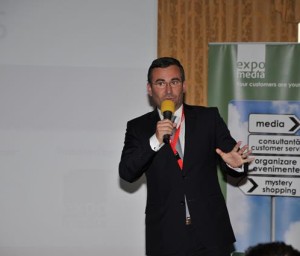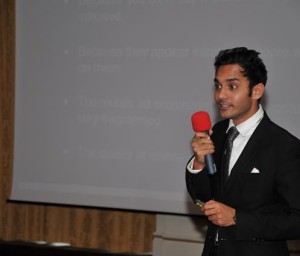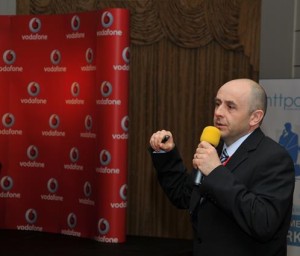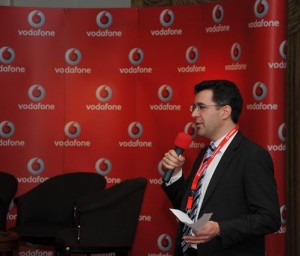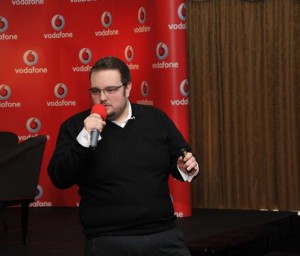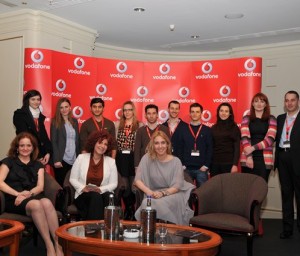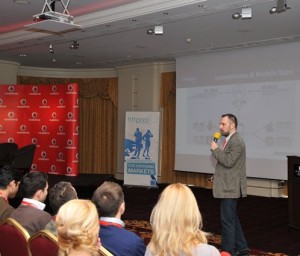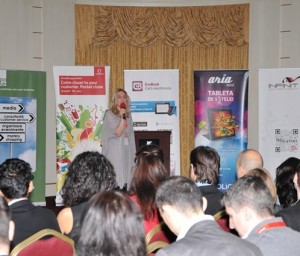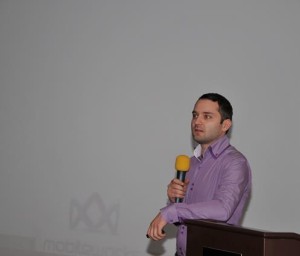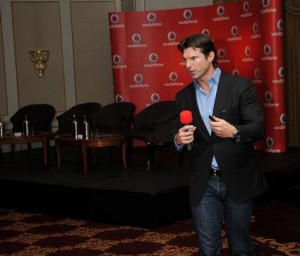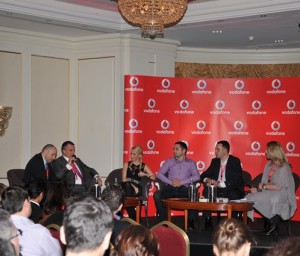Mobile Advertising Congress – an overview
Hello there! As you might have guessed from the title, this is going to be about mobile phones. So does this concern you? Let’s see: how far is your phone in relation to your body? Now how far is your loved one? We won’t ask which one do you love most (divorce rates are high enough already) but we’ll take a wild guess and conclude that whoever you are – a regular mobile user, a small (or not-so-small) business owner or a marketer / advertiser, you will soon be confronted with what the forefront of the mobile and advertising industry has been up to this past week.
A quick overview
The latest edition of the Mobile Advertising Congress took place on March 28th and included discussions about the past, the present, and, most importantly, the future of mobile. The attendees were delighted and, after a comprehensive opening speech by Angus Slater (Chief Marketing Officer of Vodafone Romania, the main sponsor of the event), eight individual presentations were held by Romanian and international speakers, innovative leaders in the area; to top all that, an outstanding informative panel of discussion led by insightful experts. Everything was successfully moderated by Roxana Memetea, Managing Partner DDB Romania.
So what was all the fuss about?
Big names, brilliant minds put together – what was the result? With their presentations, the 8 individual speakers painted a full picture in numbers and percentages about the mobile user. But fret not; they are not treating their audience as simple statistics, on the contrary: a strong case has been made against mass marketing and for the personalization of advertising and extremely focused targeting. Translation: if you are being advertised to, it will always be exactly what you need and when you need it and that means no more bombardment of irrelevant info knocking on your door – pardon, screen. On the other hand, when you are the provider and advertise your services, there is no need of annoying everyone in hope of hitting the target: mobile puts you in contact with those searching for you, minimizing loses.
As a user, you are no longer required to sift through copious amounts of information to get to what you are interested in; instead, the advertisers are trying long and hard to understand you as a consumer, what you want, what you think, how do you spend your time, what sort of experiences are you craving, they want to entertain you and hand over the control to you. Notice there’s a lot of “YOU”s in there! The mobile phone is your personal world and you do have Choice and Confidentiality – stepping stones for the new generation of advertising.
How exactly do they do all this?
There is this whole new thing about geo targeting: geolocation and geofencing. Well, maybe not so new since 1 in 3 campaigns are already using it – but more like largely unknown of. They are extremely effective and predicted to go big in the near future, so here’s what you need to know: geolocation means that by knowing where you are geographically, the phone can point you to the nearest place of interest according to your needs and geofencing is a delimited area which once entered, you are able to receive a relevant offer or discount usable on the spot. This helps generate a highly personalized “NOW generation”, as Michael Koch puts it, where everything happens in real time: “real time brands, real time feedback, real time trends”. Alexandru Cernatescu also speaks about this continuous stream of information and interaction as the “no closed doors” principle. Are we heading towards a no-queue, no-opening hours shopping era? Maximum convenience, yes please!
The other next big thing you should know about is Augmented Reality – you don’t have to be any older than a teenager and the sci-fi television shows you watched as a kid are coming to you as a reality in the next few, and they mean very few – about 4 – years, with 2.5 billion mobile AR apps to be implemented by 2017. Our discussion panel agreed: if you want to exist in the market by then, be present on mobile and use multi-device targeting.
The importance of mobile optimized sites has been highly stressed upon, as was the need for cross-channel fully integrated campaigns. As the mobile is the “best link between offline and digital” (Dan Virtopeanu), here are a few tips for you, business minds out there, on how to create successful mobile marketing campaigns: provide true interaction (Michael Koch), create a personal experience (Timotej Gala), give it a chance to become social (Alexandru Cernatescu), make it “human centric” (Alex Putineanu), make it a “kinesthetic experience” (Alex Israil).
Sounds good. Any issues?
Actually, yes: Rohith Murthy emphasizes the relatively small screen sizes and therefore limitations on the quantity of information, the general low quality design of mobile adverts, battery issues meaning you won’t always have your audience with your app or geolocation up and running and 2/3 of the world still not connected to the internet. However, a multi-device approach compensates for screen size, there’s no shortage of good designers, technological advance will solve the battery life issue and internet mobile penetration rates are accelerating faster than ever.
How about privacy issues?
There are no issues with privacy, as Teodora Migdalovici points out: the mobile phone is yours after all, and you can always opt in and out of anything. People understood that and in return of you sharing your data, brands provide higher quality service and / or entertainment. In her view, mobile is not a channel, it is an instrument that operates on the brands DNA. Thanks to mobile, brands are empowered with attributes and they can do actions that 5 years ago were unthinkable. Once upon a time, Nike was a sneakers brand with soft spot for great athletes and sport performance. Now, thanks to Mobile, Nike is one’s personal trainer. As a globetrotter of festivals around the world, Teodora showed a few examples of the awarded mobile campaigns which enabled brands to play new roles: from time-machine (no time vs quality time), to social activator, coach, guide for the soul or simply life saver, rounding up the Congress nicely and proving it can be done not just in theory.
All in all…
It was a good day! Now you know what to expect as a user and what to provide as an advertiser and vice versa – there are a lot of changes happening, this has become a multi-input process rather than a one-way road. The mobile is closer to our hearts than ever, not only metaphorically speaking and we need to learn how to use it accordingly. We’ll speak in a year from now and see how right or wrong these masterminds have been; in the meantime, we’ll keep in touch: don’t forget to turn your mobile phones ON (except in theaters).
_________________________________
Material from Mobile Advertising Congress was written by Vera Gavrila and Andreea Popescu







